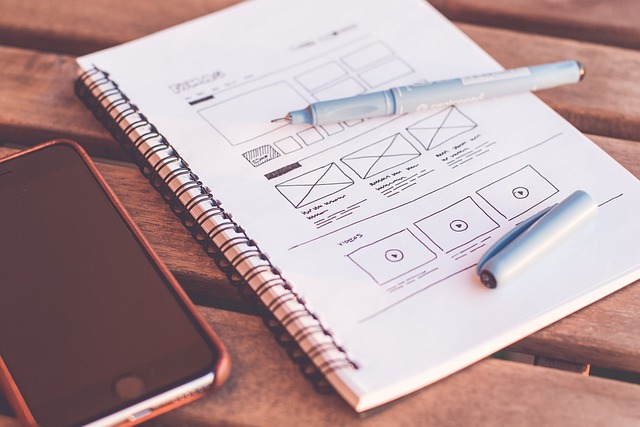High-quality web design is a strategic blend of functionality, user experience (UX), visual aesthetics, and accessibility, all aimed at understanding and meeting target audience needs. It emphasizes:
Intuitive UX: Seamless navigation, quick access to information, and goal achievement without frustration lead to higher satisfaction and repeat visits.
Visual appeal: Esthetics capture attention and reinforce brand identity, fostering connections with the audience.
Responsive design: Adaptable layouts and content ensure optimal user experience across all devices, boosting SEO rankings.
Content Organization: Clear hierarchy, meaningful grouping, and interactive elements enhance navigation, improve user satisfaction, and boost SEO.
Accessibility: Essential features like alt text and keyboard navigation make websites inclusive for users with disabilities, enhancing UX and legal compliance.
Performance optimization: Efficient coding, image optimization, and tools like lazy loading speed up load times, signaling reliability to both search engines and visitors.
Security: Strong encryption, SSL certificates, and regular security audits protect user data and maintain privacy, building trust and adhering to regulations.
Continuous maintenance: Regular updates, fresh content, security patches, and performance optimizations ensure long-term relevance and effectiveness.
High-quality web design is more than just aesthetics; it’s a strategic blend of user experience, visual appeal, and technical prowess. In today’s digital landscape, a well-crafted website serves as a business’s virtual storefront, requiring a deep understanding of core principles like UX and responsive design. From seamless navigation to rapid load times, each element contributes to a captivating and effective online presence. This article explores these vital aspects, guiding you through the essential components of creating a standout web design that attracts and retains users.
Understanding High-Quality Web Design: The Core Principles

High-quality web design goes beyond aesthetics; it’s a strategic blend of functionality, user experience, and visual appeal. At its core, it involves understanding the target audience, defining clear goals, and creating a site that not only looks stunning but also delivers an exceptional user experience. Principles like intuitive navigation, responsive design for seamless access across devices, and optimized page load times are foundational.
Effective web design also leverages typography, color schemes, and imagery to create a cohesive visual narrative. It incorporates accessibility standards to ensure inclusivity, employs search engine optimization (SEO) best practices to enhance visibility, and integrates analytics to track performance, continuously improving the site based on user behavior insights. Ultimately, high-quality web design aims to captivate users while achieving business objectives.
User Experience (UX): Crafting a Seamless Journey

In the realm of web design, User Experience (UX) is a cornerstone that transforms a simple website into an engaging journey for visitors. It involves understanding user behavior, needs, and expectations to create intuitive, accessible, and enjoyable online experiences. A well-crafted UX ensures users can navigate seamlessly, find information promptly, and achieve their goals without frustration. This, in turn, boosts user satisfaction and encourages them to return.
High-quality web design prioritizes UX by implementing clear information architecture, intuitive navigation, and responsive design. These elements work in harmony to guide users through a logical flow, fostering an effortless exploration of content and features. By focusing on UX, web designers not only enhance the overall user interaction but also contribute to better search engine optimization (SEO), as happy users are more likely to engage with and share the website.
Visual Appeal: Esthetics and Branding

In the realm of web design, visual appeal is a game-changer that can significantly impact user experience and engagement. High-quality web design goes beyond functionality; it weaves an aesthetic tapestry that resonates with the brand’s identity. Esthetics play a pivotal role in capturing and retaining users’ attention, fostering a connection between the website and its target audience. A well-designed website should reflect the brand’s unique personality through color schemes, typography, and layout, creating a memorable and engaging digital experience.
Branding is integral to this process as it ensures that the visual elements align with the company’s values and objectives. Consistent branding across various web design elements, from logos to imagery and graphics, helps establish recognition and builds trust with visitors. This strategic integration of esthetics and branding not only enhances the website’s visual appeal but also solidifies the brand’s presence in the digital landscape, ultimately driving user interaction and conversion.
Responsive Design: Adapting to Every Screen

In today’s digital era, high-quality web design goes beyond aesthetics; it encompasses a seamless user experience across various devices and screen sizes. Responsive design is a cornerstone of modern Web Design, ensuring that websites adapt beautifully to desktops, tablets, and smartphones alike. This approach leverages flexible grids, images, and CSS media queries to deliver content optimally tailored for every screen, enhancing accessibility and user engagement.
By prioritizing responsive design, web designers create dynamic and adaptable interfaces that cater to the diverse needs of users. Whether browsing on a large monitor or using a smartphone on-the-go, visitors expect consistent quality and functionality. Responsive Web Design not only satisfies this expectation but also improves search engine optimization (SEO), as search engines favor mobile-friendly websites, ultimately driving better online visibility and success.
Content Organization: Structuring for Clarity and Engagement

In high-quality web design, Content Organization is a cornerstone that significantly influences user experience and engagement. A well-structured website presents information in a logical, easy-to-navigate manner, guiding visitors through a seamless journey. By organizing content with clear hierarchy and meaningful grouping, designers ensure users can find what they need promptly, fostering a positive impression of the site’s quality and professionalism.
Effective content organization goes beyond simple layout. It involves using headings, subheadings, and whitespace to create visual breaks, enhancing readability. Integrating interactive elements, such as menus, filters, or search bars, further aids navigation. Ultimately, these strategies not only boost user satisfaction but also improve search engine optimization (SEO), making the website more visible and accessible to its target audience in the competitive landscape of web design.
Accessibility: Ensuring Inclusivity for All Users

In modern web design, accessibility is a cornerstone principle that ensures websites are usable by people with various abilities and disabilities. High-quality web design goes beyond aesthetic appeal to create inclusive digital spaces for all. This involves implementing features like alt text for images, keyboard navigation, and sufficient color contrast to support users who rely on assistive technologies such as screen readers or have visual impairments.
By prioritizing accessibility, web designers can ensure that their creations are not only compliant with legal requirements but also reach a broader audience. Well-designed websites that consider accessibility from the outset foster inclusivity, enhance user experience, and reflect a commitment to equity in the digital realm of Web Design.
Performance Optimization: Speeding Up Load Times

High-quality web design isn’t just about aesthetics; it’s equally crucial for performance optimization, especially when it comes to speeding up load times. Efficient coding practices, minified CSS and JavaScript files, and optimized images significantly reduce page weight, ensuring your website loads swiftly. Tools like lazy loading for images and content delivery networks (CDNs) further enhance speed by delivering content from the nearest server location to users.
These strategies not only provide a seamless user experience but also positively impact search engine optimization (SEO). Faster load times are a signal to both search engines and visitors that your website is reliable and valuable, potentially boosting your site’s ranking in search results.
Security Measures: Protecting User Data and Privacy

In the realm of high-quality web design, security measures are no longer a consideration—they’re a necessity. Protecting user data and ensuring privacy is paramount as websites become digital hubs for personal and professional interactions. Modern web design incorporates robust encryption protocols, secure sockets layer (SSL) certificates, and regular security audits to safeguard sensitive information from malicious attacks. These measures not only build trust with users but also comply with stringent data protection regulations like GDPR and CCPA.
User privacy is a cornerstone of ethical web design. Websites should clearly communicate their data collection practices and provide users with control over their personal information. Implementing privacy policies that are easy to understand and accessible helps foster transparency, encouraging users to engage more confidently. After all, a secure and private online experience is crucial for fostering user loyalty and ensuring the long-term success of any web design project.
Maintenance and Updates: Keeping Your Website Alive

Maintaining a high-quality web design isn’t just about creating an attractive website; it’s an ongoing process that ensures your online presence remains relevant and effective. Regular updates are essential for any website to keep up with evolving technologies, changing user behaviors, and search engine algorithms. A static website quickly becomes outdated, losing its potential impact on visitors.
Effective web design maintenance involves keeping content fresh and relevant, applying security patches to protect against vulnerabilities, and optimizing the site’s performance. Regular backups ensure that if any issues arise, your website can be restored quickly without significant downtime. Keeping up with these practices not only extends the lifespan of your web design but also enhances user experience and contributes to better search engine rankings.
